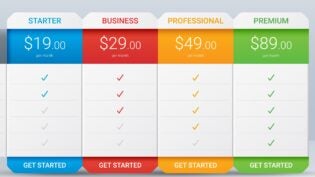
We’re proud of the marketing and sales metrics we have in place. I sit in meeting after meeting with people going through endless charts showing their performance across any number of metrics.
Too often, however, we see huge disconnects in what the metrics show and the most important performance metrics: revenue/profitability attainment, growth, share, customer satisfaction, customer growth/retention, and so forth.
Ultimately these disconnects come from measuring the wrong things. Usually it was from measuring the activities, not the outcomes of those activities.
Here are some examples, I’ve seen recently:
Everyone in an outbound call center was measured on the number of calls (dials they made). One particularly creative individual figured a way to consistently beat his daily goals by about 20%—he called dozens of his friends checking how they were doing and figuring out what they would do after work. In team meetings, management identified him as a “top performer.” I heard one manager announcing to the team, “I wish everyone in the organization would do what George does.” (Thankfully, they didn’t.)
I reviewed the goals of a content marketing team. They had goals to send X millions of emails a month. They met and exceeded those goals consistently—at least until I started asking some questions. “How many bouncebacks/undeliverables, how many opens, how many click-throughs, how many…” As you might guess, these results were pretty poor.
Related Article: Bad Commission Plans Drive Bad Sales Behaviors
All of our activities in sales and marketing are focused on producing specific outcomes. It’s those outcomes linked together that produce the overall results we expect (For example, each customer interaction elicits commitments and agreements with the customer as they move through the buying cycle.)
Consequently, the outcomes are the critical metrics, not the activities that produce the outcomes. If we need to find and qualify 10 customers this week, measuring the number of calls or emails to find those people is relatively meaningless—but sales people need to make a sufficient number of calls or emails to find and qualify 10 customers. It may be 100 phone calls, and 25 actual conversations with distinct people. Those activities are, sometimes, aids we use to help us think about activity levels to create outcomes—but the most relevant metric at the end of each week is the number of customers qualified.
Web traffic is relatively meaningless until we start linking the actions people take on the web to specific and meaningful outcomes. It may be a request for certain white papers or case studies, it may be a request for a phone call to talk about their problems. The most meaningful metrics are the outcomes our activities produce, not the volume of those activities.
Metrics are important. These score cards help us see whether we are on target to meeting our ultimate goals. Having leading metrics is critical—but measuring outcomes rather than activities that may produce an outcome (but may not) is how we make progress against those goals.
Discovering and putting in place the right metrics/goals forces us to know more. That is, we can be relatively clueless about our business/functions if we focus on measuring phone calls or web activities. But knowing the outcomes those activities should produce, having the ability to set the right goal for those outcomes, designing the right activities to produce those outcomes, forces us to really understand the business. You can’t fake it.
To understand the relationships between the right activities and the meaningful outcomes requires us to be able to connect the dots, understanding our customers, our markets, our workflow, our value, and what works. It forces us to be able to back track from a revenue goal to the leading metrics that produce business—the outcomes of specific marketing activities, the outcomes of specific sales activities. To set the right goals, at that level, means we have to really understand the overall process and workflow to produce results.
If we don’t have that deep understanding of our business, if we don’t understand how these things link together, then we will always struggle to achieve our goals and drive performance. But, then again, if we don’t have an intimate understanding of these cause-effect relationships, of what drives business and produces meaningful results, then we probably don’t deserve to be in our job.
Are you measuring the right things?












